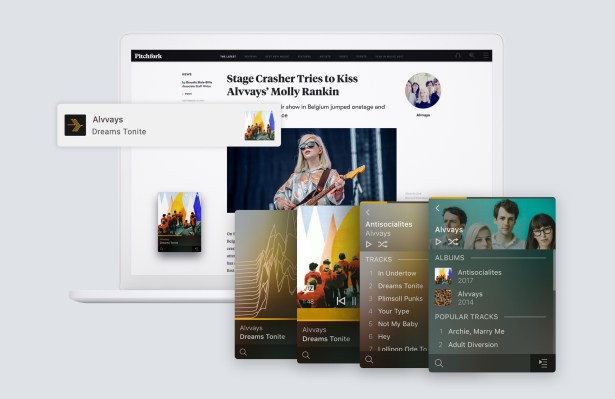Media software maker Plex, which has been enjoying a bit of growth following its newer focus on DIY cord-cutters, today announced a new incubator and community resource called Plex Labs. The idea here is to help the company’s internal passion projects gain exposure, along with those from Plex community members. Plex Labs will also offer in-depth technical writing about Plex, the company says.
Today, Plex Labs is also unveiling its first project: a music player called Plexamp.
The player’s name is a nod to the long-lost Winamp, which it’s designed to replace. The player was built by several Plex employees in their free time, and is meant for those who use Plex for music.
As the company explains in its announcement, the goal was to build a small player that sits unobtrusively on the desktop and can handle any music format. The team limited itself to a single window, making Plexamp the smaller Plex player to date, in terms of pixel size.

Under the hood, Plexamp uses the open source audio player Music Player Daemon (MPD), along with a combination of ES7, Electron, React, and MobX technologies.
The end result is a player that runs on either macOS or Windows and works like a native app. That is, you can use media keys for skipping tracks or playing and pausing music, and receive notifications. The player can also handle any music format, and can play music offline when the Plex server runs on your laptop.
Plexamp can be brought the foreground with a focus on search with the global activation hotkey (cmd + shift + space). It offers other keybindings for advanced users, too.

The player also supports gapless playback, soft transitions and visualizations to accompany your music. Plus, the visualizations’ palette of colors is pulled from the album art, Plex notes.
Additionally, Plexamp makes use of a few up-and-coming features that will be included in Plex’s subscription, Plex Pass, in the future. These new features are powering functionality like loudness leveling (to normalize playback volume), smart transitions (to compute the optimal overlap times between tracks), soundprints (to represent tracks visually), waveform seeking (to present a graphical view of tracks), Library stations, and artist radio.

While Plexamp is the first to emerge from the new Labs division, the company tells us that it will also highlight those projects that have before been published outside Plex, including those posted to its forums, on Reddit, and elsewhere.
The community has built a number of projects over the years, but it has sometimes been difficult to find them, Plex says. Plex Labs hopes to provide a more central resource for that.
